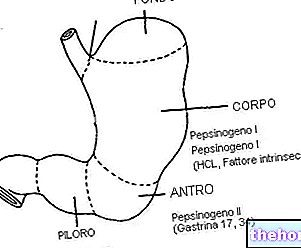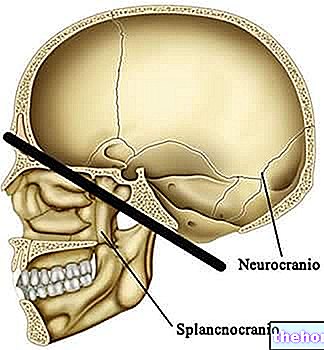Mineralocorticoids are a group of steroid hormones produced by the adrenal gland in its outermost portion, called the cortical or adrenal cortex; therefore they represent a subcategory of corticosteroids. In fact, the division of these hormones on a functional basis sees the mineralocorticoids - active on the hydromineral metabolism - subdivided into a second category, that of glucocorticoids, active on the metabolism of glucose. Furthermore, while the synthesis of mineralocorticoids occurs in the glomerular (outermost) area of the cortex, glucocorticoids are produced in the fasciculated and reticular (innermost) area.
As anticipated, mineralocorticoids regulate water and saline exchange, retaining sodium and water in the kidney, and favoring the elimination of potassium and hydrogen ions through an active secretion process.

Like all steroid hormones, mineralocorticoids exert their action through the binding with a specific receptor (in this case a cytoplasmic receptor for mineralocorticoids), which at the nuclear level influences the expression of responsive genes. This rather slow mechanism of action , is flanked by a faster biochemical pathway, mediated by the interaction of mineralocorticoids with special membrane receptors, whose activation triggers a cascade of intracellular signals.
The affinity of aldosterone for the cytoplasmic mineralocorticoid receptor is similar to that of cortisol, an important glucocorticoid that circulates in the body at approximately 100 times higher levels; its mineralocorticoid activity is however inhibited by the enzyme 11 β-hydroxysteroid dehydrogenase ( 11 β-HSD), which converts cortisol into cortisone, greatly decreasing its affinity for the cytoplasmic receptors of mineralocorticoids. Licorice, and in particular its active ingredient, glycyrrhizic acid, can inhibit the activity of this enzyme , inducing in the organism a state of hyper-pseudo-aldosteronism (although aldosterone levels are normal, the clinical picture suggests an underlying rise in the same).
The mineralocorticoid activity is maximum for aldosterone and its precursors (11-deoxycorticosterone and 18 hydroxy 11-deoxycorticosterone), while it is decidedly lower - but certainly not negligible - for glucocorticoids such as cortisol and cortisone, and for other hormones , such as progesterone. We are therefore talking, as already stated, of a subdivision in prevalent functional terms.
Among the drugs with high mineralocorticoid activity, we remember fludrocortisone, which unlike aldosterone also has an important glucocorticoid action. For therapeutic purposes, mineralocorticoids are used in the treatment of Addison's disease and in severe hypotensive states.
The synthesis of mineralocorticoids undergoes the important influence of the renin-angiotensin system. Renin is produced by the juxtaglomerular cells of the renal arterioles (particularly sensitive to changes in blood pressure and also subject to sympathetic control) and acts on angiotensinogen (a protein of hepatic origin ) transforming it into angiotensin. Another enzyme acts on the latter, called ACE (angiotensin converting enzyme), expressed in the lungs, in the endothelial cells and in the plasma. Thus angiotensin II is born, which in the perspective of a global hypertensive effect, also stimulates the aldosterone secretion.
The system just illustrated is stimulated by hypovolemia, hyponatremia and hypotension.
Aldosterone secretion is also regulated by blood sodium and potassium levels, as well as by a pituitary factor called ASF (Aldosterone Stimulating Factor) and by the "adrenocorticotropic hormone (ACTH), always of pituitary origin, which however plays a marginal role. An inhibitory effect on the release of aldosterone is instead exerted by the atrial natriurethral factor, a peptide hormone secreted by the cells of the atrial myocardium in response to distension of the right atrium wall induced by hypervolemia (excessive increase in blood volume).
















.jpg)











